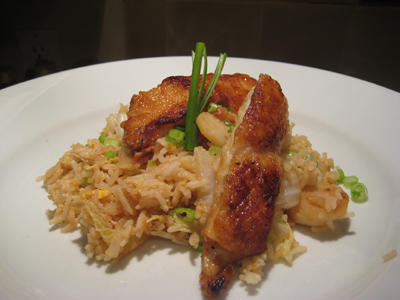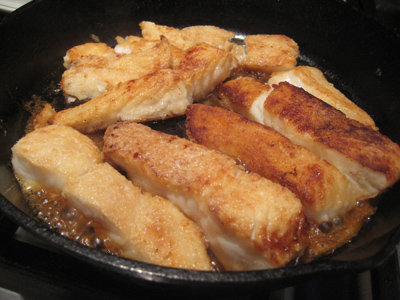
Let's face it. Leaving one's comfort zone is intimidating at best and often downright scary. It doesn't matter what you're doing -- traveling to a new place, trying a different career, or cooking food from a different culture -- entering into the realm of the unknown can sometimes seem like more trouble than it's worth.
This is why I avoided cooking any type of Asian food for years. My childhood training in my mother's Italian kitchen made dishes like prosciutto pie, homemade ricotta cheese, and handmade pasta seem easy compared to delving into the unknowns of curries and fish sauce. I preferred sticking with olive oil instead of trying peanut oil. It didn't help that I never even tried real Chinese food until I was in college. When I was a kid, Chinese food equaled Chow Mein Night, where the chow mein came out of a can and was served with Uncle Ben's minute rice -- mom kept the arborio for risotto and rice balls. I loved Chow Mein Night mostly because we were allowed to eat our dinner on trays in the living room while watching TV, but was always left feeling slightly queasy at the mass of baby shrimp and stringy vegetables on my plate. (My friend Shirley, on the other hand, grew up in an alternate Korean universe, where they would occasionally have Italian night. This meant her mother would cover the kitchen table with a red-checked tablecloth and serve spaghetti with jarred marinara sauce on top. We were destined to be friends.)
Yet once I was introduced to Asian cuisines, they topped my list of favorite foods. I distinctly remember eagerly trying hot and sour soup for the first time. I was in a little strip mall restaurant in Goleta, a town just outside Santa Barbara where I went to school. I was fascinated with the lovely shapes of the tree ear mushrooms and couldn't get enough of the mixture of vinegar and black pepper. And then there was the Kung Pao, General Tso and so much else, the flavors waking up taste buds I never knew I had. It was all very tame stuff as far as Chinese food goes, but the experience was enchanting and completely eye opening to me. I didn’t explore Thai, Korean, Japanese or Vietnamese foods until after college when I lived in L.A. Again I started with docile dishes, but soon graduated to sucking shrimp heads that had been cooked in spicy sauces. Yum.
But as much as I came to love eating all types of dumplings, savory noodles, and curries, I never really tried my hand at cooking anything more basic than stir-fry until after I had my kids nine years ago. By this time I realized that making dumplings was a lot like making raviolis, and simmering Asian sauces was no more difficult than the multitude of Italian dishes I had made over and over. So I was excited to receive a copy of Food Made Fast Asian when I was working on some Williams-Sonoma books. Inside were easy instructions for making everything from dry-fried string beans with pork to Thai green curry shrimp and lemongrass pork. After trying a few dishes out on my family, I began to feel more confident using fish sauce, hoisin, coconut milk, and peanut oil. I then branched out and tried Asian recipes from other sources, and finally started to experiment on my own. It took a while, but I finally gained enough confidence to vary ingredients and spices to suit my family's tastes instead of blindly trusting unknown and untried recipes each time.
